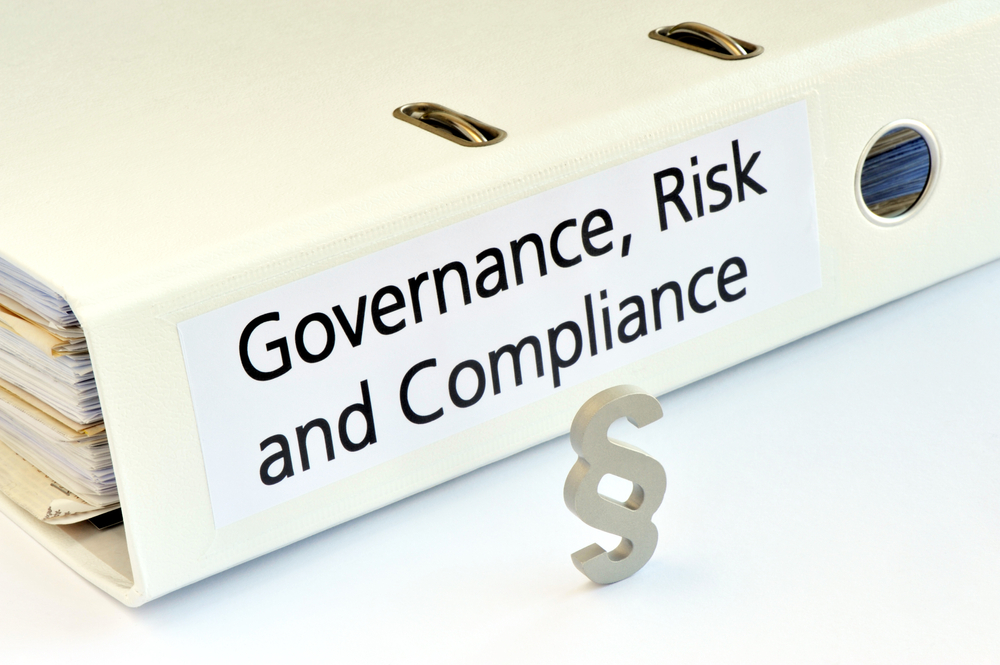Introduction
Governance, Risk, and Compliance (GRC) is the integrated collection of capabilities that enable an organization to reliably achieve objectives, address uncertainty and act with integrity.
It is important to remember that organizations have been governed, and risk and compliance have been managed, for a long time — in this way, GRC is nothing new. However, many had not approached these activities in a mature way, nor have these efforts supported each other to enhance the reliability of achieving organizational objectives.
In a forward-thinking organization, GRC is viewed as an integrated collection of all capabilities necessary to support Principled Performance. GRC doesn’t burden the business, it supports and improves it.
No organisation can afford to ignore risks (whether business, financial, operational, political, strategic, regulatory compliance and reputational risks).
GRC Drivers
Organizations must address today’s challenging business climate. Even small businesses, nonprofits, and government agencies are facing issues that only large companies had to face in the past. Think of how many of these factors you have to deal with:
- Stakeholders demand high performance along with high levels of transparency
- Regulations and enforcement are ever-changing and unpredictable
- The exponential growth of third-party relationships and risk is a management challenge
- The costs of addressing risks and requirements are spinning out of control
- The harsh (and scary) impact when threats and opportunities are not identified
Many organisations are grappling with a number of challenges, which are largely driven by increasing complexity caused by technological change, changes in regulations, growing competitive pressures and the impact of globalization and integration of financial markets.
As cloud computing becomes a strategic way for businesses to cut costs and increase sales, there has been tremendous capital activity in funding cloud-based ventures. Estimates posit that the global cloud computing sector will reach revenues of $20 billion by end of the year 2016, growing at a pace of over 30 per cent yearly.
There is an increasing interest and unrivalled commitment from organizations of all sizes to run most of their mission-critical apps — including GRC apps — in the cloud.
Cloud computing is a new paradigm in IT, and new advancements in technology and industries continue to take the cloud to the next level. Collaboration and open communication amongst enterprises and cloud vendors can help strengthen an organizations governance, risk management, and compliance programs, improve overall decision making, and drive superior business performance.
These challenges have continued to pose serious threats to business survival and profitability, and investors’ demands for increased return on investment, accountability and transparency are constantly on the rise. As a result, the need to meet various stakeholders’ expectations and remain competitive has driven some organisations into making unethical and unsustainable business decisions, thereby exposing themselves to unprecedented business risks, reputational and compliance issues.
Benefits of Integrating Governance, Risk and Compliance into Your Organization
- Reduce costs, since redundant activities are identified and streamlined or eliminated.
- Reduce gaps and errors, since the integration creates a holistic system of checks.
- Increase the quality of the risk-based information on which strategical and tactical decisions are based.
- Comply with confidence, establishing controls and acceptable levels of risk while staying in alignment with objectives and policies.
- Increase transparency into risk and compliance results.
- Provide trust results from consistent organizational positions and actions, from oversight to operations.
- Increase agility with a clear definition of who handles what activities in what sequence.
- Promote the ability to repeat processes in a consistent manner.
- Create more focus on substantive issues and corporate strategy.
- Assure that expectations and objectives are met.
- Increase the efficiency of internal and external audits.
- Increase business agility by identifying the root cause of compliance problems and acting quickly to resolve them.
- Enhance monitoring and reporting with desktop and mobile dashboards.
From the boardrooms to the shop floor, our Governance, Risk, Compliance and Sustainability teams understand what it takes to develop the right strategy to help our clients navigate through the continually changing governance, risk and compliance landscape, and ultimately meet stakeholders’ expectations.
We support various clients to improve their transparency around reporting non-financial information to stakeholders and help our clients to be environmentally and socially responsible.


Recent Comments